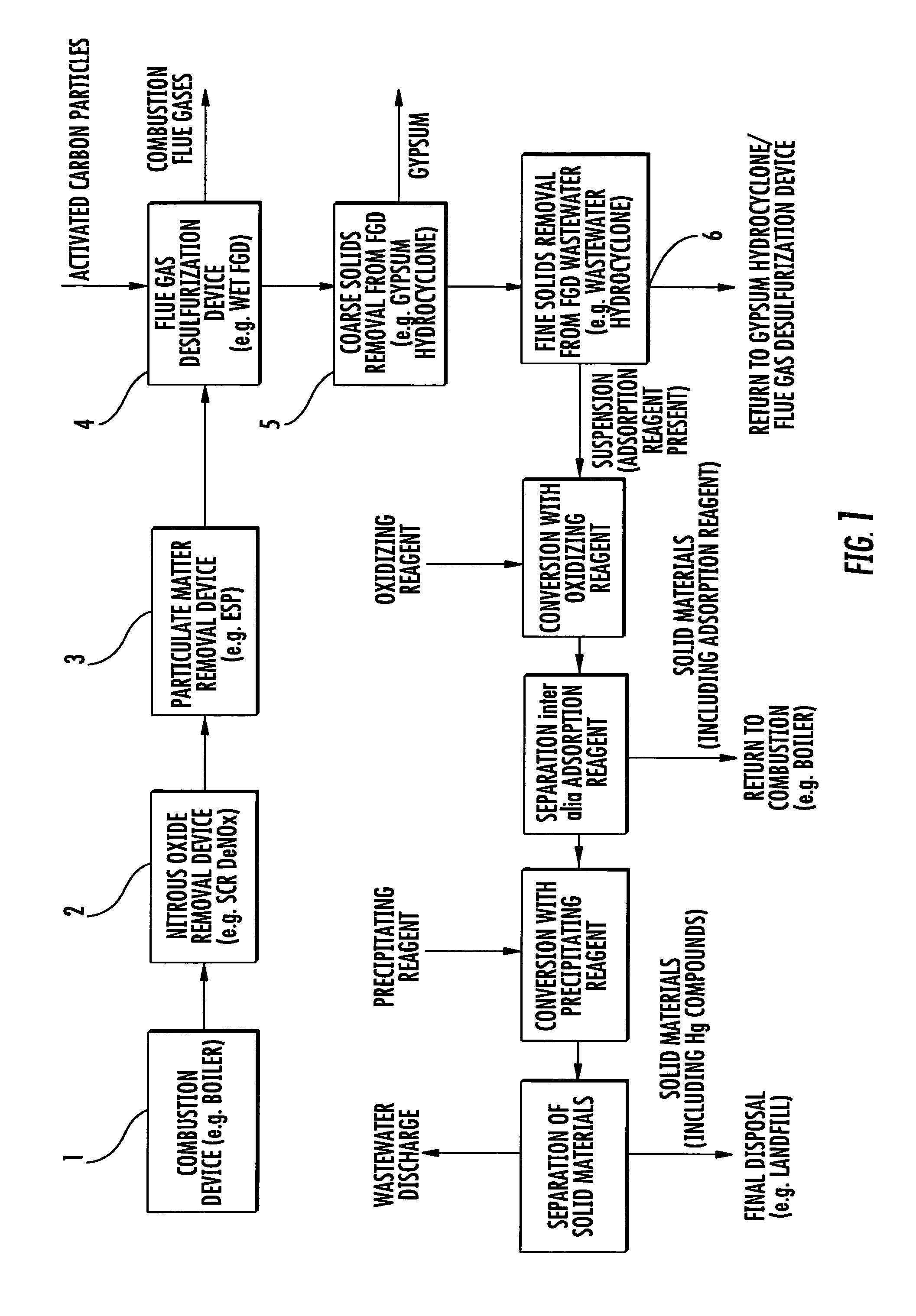Method for removing mercury from flue gas after combustion
a technology of flue gas and mercury, which is applied in the field of removing mercury from flue gas, can solve the problems of complex process technology of thermal desorption, high cost, and mercury as a particularly poisonous heavy metal in the flue gas, and achieves the effect of simple and economical
- Summary
- Abstract
- Description
- Claims
- Application Information
AI Technical Summary
Benefits of technology
Problems solved by technology
Method used
Image
Examples
Embodiment Construction
[0011]In the method in accordance with the invention, the adsorption reagent can, for instance, be blown into the flue gas in the form of fine particles. In this case, the mercury is adsorbed substantially directly by the adsorption agent from the flue gases. The adsorption agent can also be added to a wet scrubbing process, such as wet FGD. In this case, the mercury contained in the flue gases will be first partially dissolved and is substantially adsorbed from the liquid phase by the adsorption reagent. It is also possible to combine the adsorption from the gas phase and from liquid phase by introducing the adsorption reagent into the combustion flue gas upstream of a wet scrubbing process.
[0012]Common adsorption reagents, such as bentonite, silica gel and activated carbon, can be used as the adsorption reagent.
[0013]The adsorption reagent is separated from the scrubbing solution after the adsorption of mercury. Such separation can be conducted with all the devices known to expert...
PUM
| Property | Measurement | Unit |
|---|---|---|
| concentration | aaaaa | aaaaa |
| concentration | aaaaa | aaaaa |
| solubility | aaaaa | aaaaa |
Abstract
Description
Claims
Application Information
 Login to View More
Login to View More - R&D
- Intellectual Property
- Life Sciences
- Materials
- Tech Scout
- Unparalleled Data Quality
- Higher Quality Content
- 60% Fewer Hallucinations
Browse by: Latest US Patents, China's latest patents, Technical Efficacy Thesaurus, Application Domain, Technology Topic, Popular Technical Reports.
© 2025 PatSnap. All rights reserved.Legal|Privacy policy|Modern Slavery Act Transparency Statement|Sitemap|About US| Contact US: help@patsnap.com


